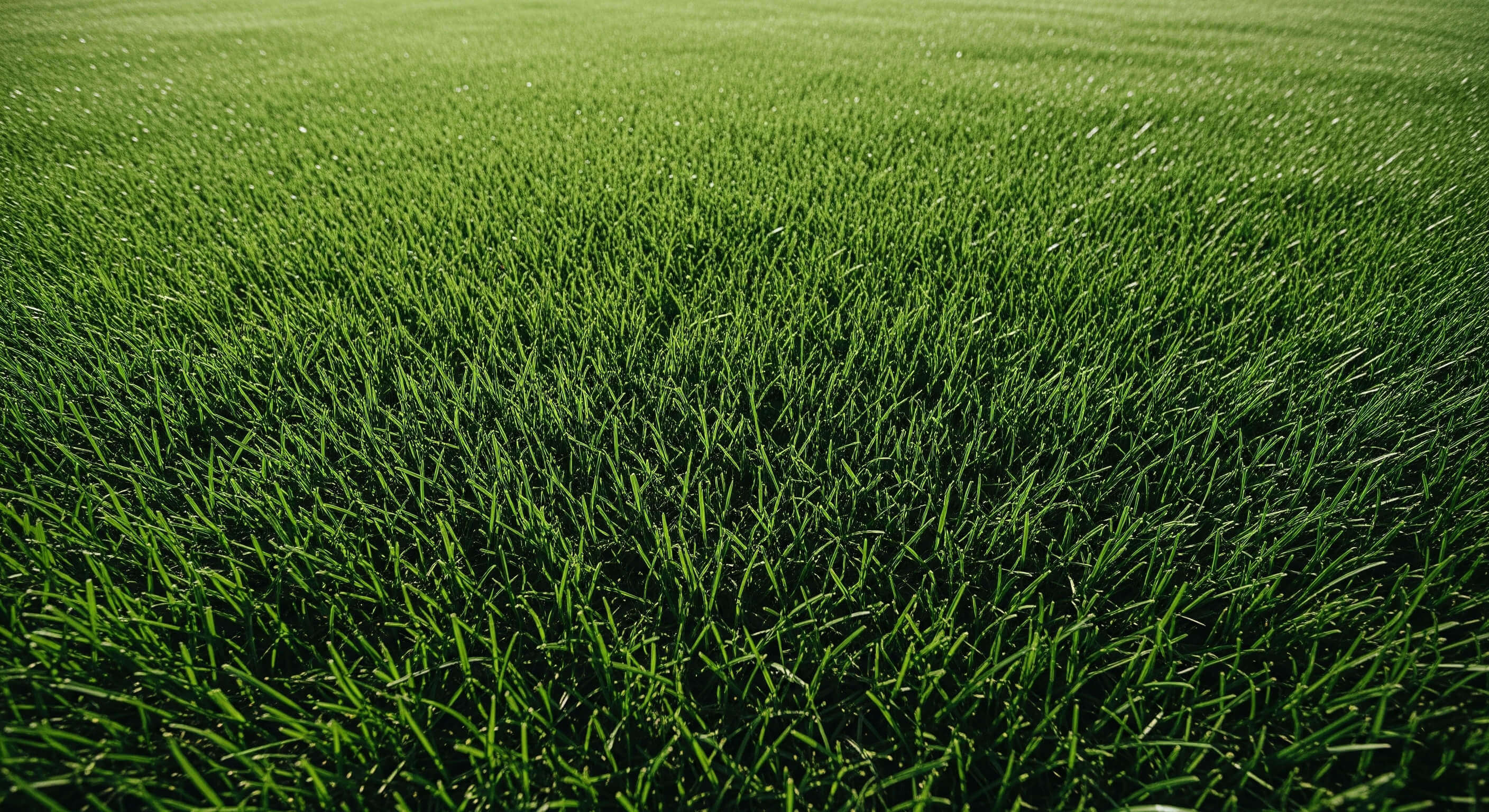Overview
Bermuda grass is among the most popular warm-season turfgrasses in the southern United States. It is known for its outstanding heat and drought tolerance, vigorous growth, and ability to withstand heavy foot traffic, making it a top choice for lawns, sports fields, and golf courses in warm climates.
Native to Africa, Bermuda grass has adapted to warm regions around the world. It spreads through both above-ground stolons and underground rhizomes, creating a dense and tough turf that recovers quickly from damage.
Identification Features
Identifying Bermuda grass is quite simple once you know the key features to look for:
- Blade texture: Fine to medium texture with sharp, pointed tips
- Color: Gray-green to dark green depending on variety
- Growth pattern: Spreads aggressively via stolons and rhizomes
- Blade width: 2-4mm wide
- Seed head: Distinctive finger-like seed heads with 3-7 spikes
- Ligule: Ring of white hairs
- Vernation: Folded in the bud
Growing Conditions
Bermuda grass thrives in specific conditions that match its warm-season growth pattern:
Climate Requirements
- USDA Hardiness Zones: 7 through 10
- Optimal temperature range: 80-95°F (27-35°C)
- Goes dormant below 50°F (10°C)
- Full sun needed (at least 6-8 hours daily)
- Poor shade tolerance
Soil Preferences
- pH range: 6.0 to 7.0 (slightly acidic to neutral)
- Well-draining soil essential
- It tolerates different soil types, including clay and sandy soils.
- Salt tolerance: Moderate to high
Maintenance Requirements
Mowing
Proper mowing is crucial for maintaining the health of Bermuda grass:
- Optimal height: 0.5-1.5 inches for common Bermuda and 0.25-0.75 inches for hybrid varieties
- Frequency: 2-3 times a week during peak growing season
- Never cut more than 1/3 of the blade height in a single mow
- Use a reel mower for the best results on hybrid varieties
Watering
Bermuda grass becomes drought-tolerant once established; however, it needs proper irrigation to thrive:
- Water requirements: 1 to 1.25 inches weekly during the growing season
- Deep, infrequent watering encourages deep root development
- Water your lawn in the early morning to reduce the risk of disease
- Reduce watering in the fall to help plants prepare for dormancy
Fertilization
Bermuda grass is a nutrient-intensive plant that needs regular fertilizing
- Apply 1-2 lbs of nitrogen per 1,000 sq ft each month during the growing season
- Begin fertilizing when the grass starts to break dormancy (spring green-up)
- Use a complete fertilizer with a 3-1-2 or 4-1-2 N-P-K ratio
- Stop fertilizing 4 to 6 weeks before the first expected frost
Common Problems & Solutions
Diseases
- Spring Dead Spot: The most serious disease can be prevented through proper fertilization and the application of fungicides
- Dollar Spot: Small circular patches can enhance nitrogen levels and improve air circulation
- Brown Patch: Large, irregular patches are present; avoid watering in the evening and using excessive nitrogen
Pests
- Armyworms: It can quickly damage lawns, so it’s important to monitor the situation and treat it promptly
- Grubs: Focus on feeding the roots and apply preventive treatments in early summer
- Mole crickets: Create a tunnel through the soil and apply targeted insecticides
Weeds
Bermuda grass grows densely, effectively crowding out weeds. However, using pre-emergent herbicides may be necessary for optimal results
- Crabgrass
- Annual bluegrass
- Goosegrass
- Nutsedge
Pros and Cons
Advantages
- Excellent heat and drought resistance
- Rapid growth and swift healing after damage
- High traffic tolerance
- Dense, lush turf when properly maintained
- Good salt tolerance for coastal regions
Disadvantages
- Poor shade tolerance
- Goes dormant and turns brown during winter
- High maintenance requirements
- Aggressive growth can overtake flower beds
- Needs frequent mowing during the growing season
Popular Bermuda Grass Varieties
- Common Bermuda: Raised from seed, this option has a coarser texture and is more affordable
- Tifway 419: Commonly used hybrid for sports fields and golf courses
- TifTuf: Enhanced drought tolerance and increased resistance to wear
- Celebration: The deep blue-green color exhibits good shade tolerance for Bermuda grass
- Latitude 36: A cold-hardy variety that allows for an extended growing zone further north
